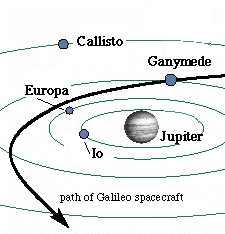This drawing shows the 4 Galilean satellites and the path of the Galileo spacecraft.
Click on image for full size
NASA
Io's Position
This drawing shows the positions of the four Galilean satellites relative to each other, and the path of the Galileo spacecraft on one of its flyby's past Jupiter.
Of the four Galilean satellites, Io is the inside moon, Europa the next closest to Jupiter, Ganymede the third furthest out, followed by Callisto as the furthest from Jupiter.
You might also be interested in:
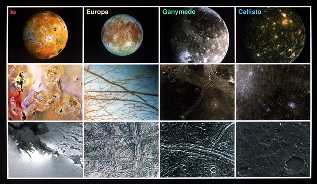
The Galilean satellites are the 4 big moons of Jupiter, Io, Europa, Ganymede, and Callisto. These moons are called Galilean because they were discovered by Galileo Galilei in 1610. In this picture, Io,
...more
Galileo was a spacecraft that orbited Jupiter for eight years. It made many discoveries about Jupiter and its moons. Galileo was launched in 1989, and reached Jupiter in 1995. The spacecraft had two parts.
...more
Amalthea was discovered by E Barnard in 1872. Of the 17 moons it is the 3rd closest to Jupiter. Amalthea is about the size of a county or small state. Amalthea is named after the goat in Greek mythology
...more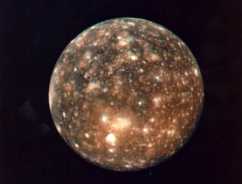
Callisto was first discovered by Galileo in 1610. It is the 2nd largest moon in the solar system, and is larger than the Earth's moon. It is about as big as the distance across the United States. Callisto
...more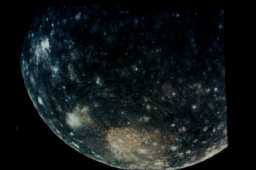
Measurements by the Galileo spacecraft have been shown that Callisto is the same inside from the center to the surface. This means that Callisto does not have a core at the center. This means that, unlike
...more
Many different types of surface are shown in this picture. In the front is a huge crater, which goes for a long way over the surface. This crater could be compared to that of Mimas. They both show that
...more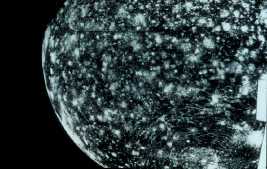
The surface of Callisto is deeply marked with craters. Craters are the little white marks in the picture. It looks like it might be the most heavily cratered body in the whole solar system. And some of
...more


